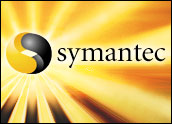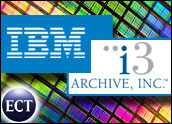
Hewlett-Packard announced today that it has added an HP-UX blade server to its Itanium arsenal, a move that gives it a slight edge over IBM, one analyst said.
“When you compare where they were Monday vs. where they are today, this does give HP salespeople something in their kit bag which not only didn’t they have before, but something IBM can’t counter,” Gordon Haff, senior analyst, Illuminata, told TechNewsWorld. “It does give them a little bit of incremental advantage in data centers over IBM. IBM has the AIX, Power PC blade at a lower power, lower cost than HPs, but its sweet spot is large-scale, high-performance computing clusters. IBM doesn’t have a blade that can offer virtualization capabilities and the horse power of this new HP blade.”
Breaking Ground in HP-UX 11i
The BL60p’s introduction is more significant for its UNIX operating system — it is the first blade server to run on HP-UX 11i — than for its Itanium 2 chip.
“At one level it’s a semantic point,” Haff said. “Obviously it is an Itanium blade, but the news is there’s now an HP-UX blade. It’s very clearly an HP-UX blade for commercial, data-center use vs. a Linux blade for high-performance computing. What you see going on here reflects commercial blades into a data center in a box. If HP is going to have a whole data center in a box with switches, storage and everything else, they need HP-UX in there.”
IBM offers a blade running on its UNIX flavor, AIX, but Haff said it is not as powerful as HP’s new entry.
HP’s new blade contains an Itanium 2 processor that runs between 1.4GHz and 1.6GHz and uses 3M bytes of cache memory. It is the same chip as is used in HP’s standalone servers, but with a lower end cache.
Blades Still Not for Everyone
Customers who need more configurability are still better off with complete server boxes instead of the slim, plug-in blades, Haff said.
Intel recently said it was delaying the release of its next-generation Itanium 2, code named Montecito, from early 2006 to mid-2006. Major server manufacturers Dell and IBM no longer support Itanium.
The BL60p fits into the same rack HP already uses for Intel Xeon and Advanced Micro Devices Opteron-based blades, which means that customers can add the HP-UX-based servers to already existing stacks of Windows or Linux servers. The BL60p can also run Windows or Linux and HP will support them, but they will only ship with HP-UX.
The BL60p will cost US$5,695 and is expected to start shipping at the beginning of 2006.





















































